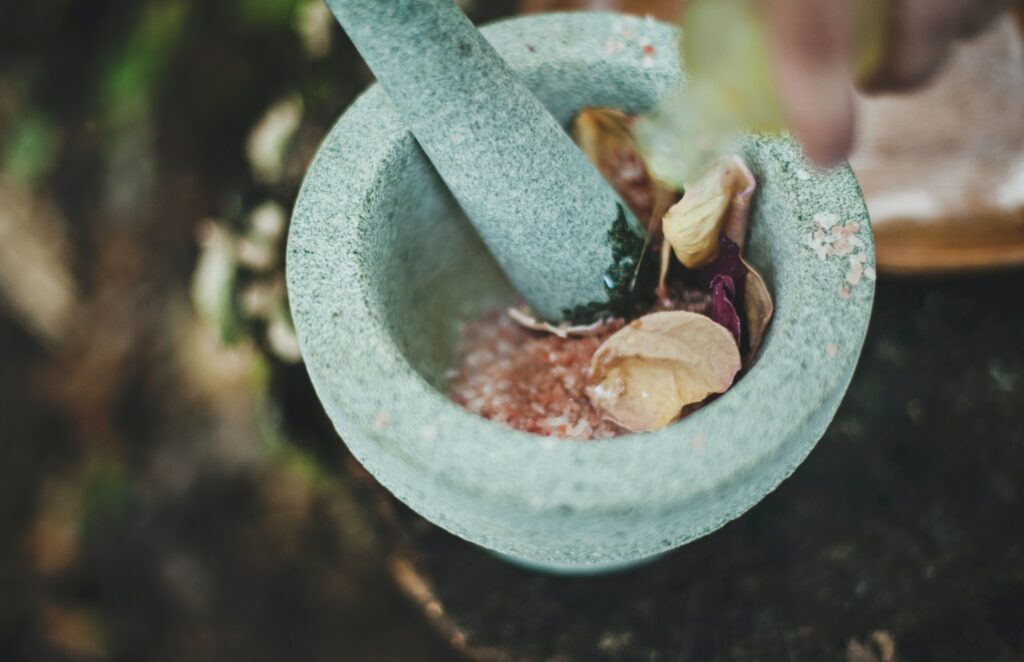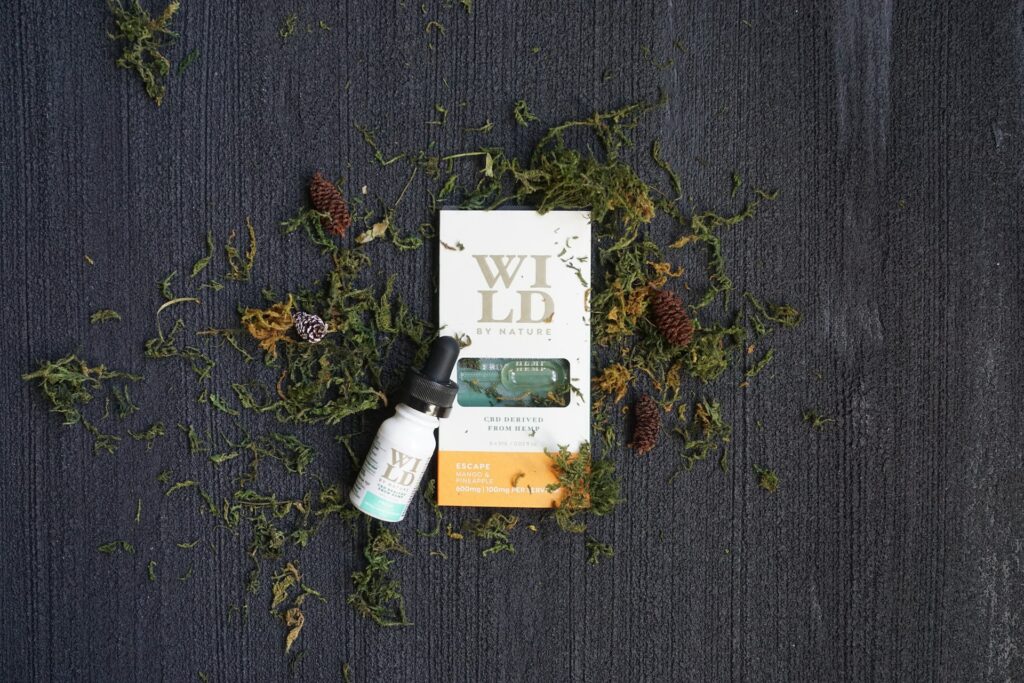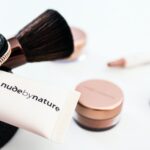Table of Contents
Today, we’ll embark on an enlightening journey, debunking myths and unveiling truths about the potent yet soothing potential of this humble, green-tinted elixir. From the luscious shores of Australia, where its medicinal use dates back hundreds of years, to the vanity of every skincare enthusiast, tea tree oil has traveled far. But can it help with those stubborn dark spots marring your flawless face?
By the end of this post, you’ll learn how this fragrant essence can be the underdog champion in your battle against hyperpigmentation. We’ll be diving deep into the science of what causes these annoying dark spots and exploring why and how tea tree oil could be your trusty ally in bidding them farewell. I’ll also share my tried-and-true methods of applying tea tree oil, plus tips for incorporating it into your skincare regimen without causing a rebellion on your skin.

So grab your favorite mug of tea (perhaps a spot of tea tree?), sit back, and let’s journey into the world of natural beauty solutions together. Time to tell those dark spots to pack their bags because we’re about to give them an eviction notice!
The Science of Spotless Skin

Our skin’s incredible healing powers can be a lifesaver when battling dark spots. And the best part? Tea tree oil can give those powers a hefty boost. This oil contains terpenes, natural compounds that can encourage skin cell growth and collagen production. This combo results in faster wound healing – science is pretty awesome.
While we can’t say that tea tree oil directly inhibits tyrosinase (the enzyme responsible for melanin production), its skin renewal properties are a force to be reckoned with regarding fading acne scars, sunspots, and blemishes.
Here’s a little beauty secret: mix your tea tree oil with aloe vera gel for an extra punch of brightness and faster dark spot treatment. This Vedix tip has been a game-changer for me!
Tea tree oil is cherished in the skincare world for its multiple benefits, and it’s especially beneficial when it comes to managing dark spots. Here’s why:
- Antiseptic properties: Tea tree oil is known for its ability to fight off bacteria and fungi. This property makes it effective in treating acne, which often leaves dark spots behind.
- Skin cell renewal: It promotes the renewal of skin cells by aiding in the migration and proliferation of skin cells. This turnover can help fade dark spots and encourage healthier, fresher skin to surface.
- Collagen stimulation: The terpenes present in tea tree oil stimulate collagen production, essential for maintaining skin’s elasticity and youthfulness. This process can also aid in repairing dark spots or other skin damage.
- Anti-inflammatory benefits: Tea tree oil is widely recognized for its anti-inflammatory properties. It can help soothe the skin and reduce redness and irritation, which can prevent the formation of dark spots caused by inflammation.
- Overall skin health: By promoting a healthier skin environment, tea tree oil aids in preventing the conditions that often lead to dark spots, such as acne and inflammation.
- Versatility: Tea tree oil can be combined with other ingredients to target dark spots. For example, when paired with aloe vera gel, its skin brightening abilities are enhanced, accelerating the treatment of dark spots.
Tackling Dark Spots with Tea Tree Oil: A Step-By-Step Guide
According to Ayurvedic philosophy, Dark spots can often result from imbalanced ‘doshas’ or energies in our body. Excessive melanin production, leading to hyperpigmentation, can be triggered by sun exposure, hormonal changes, age, acne, and skin inflammation.
As a veteran beauty blogger, I cannot stress enough the importance of understanding your unique skin type. So, consulting an Ayurvedic doctor to get to the root of your dark spots could be significant.
Alright, let’s get down to business! Here are a couple of tea tree oil recipes I swear by to treat different kinds of dark spots:
For Acne Spots
Ingredients:
- Tea tree oil
- Jojoba/Sunflower/Grapeseed oil
- Turmeric
- Yashtimadhu
- Chandanam
The Magic Recipe:
- Add 4 to 5 drops of tea tree oil to 1 spoon each of powdered turmeric, yashtimadhu, and chandanam.
- Add a tablespoon of light carrier oil like jojoba or sunflower oil to dilute the essential oil.
- Mix it all together until you have a paste, and apply it to areas affected with acne spots.
- Let it sit for about 20 to 30 minutes, then wash it off.
- Repeat this regularly, and you’ll start noticing the spots fading – it’s like magic!
- For Dark Spots from Skin-Inflammatory Conditions
Ingredients:
- Tea tree oil
- Coconut/Jojoba Oil
- Shatavari
- Guduchi
- Manjistha
The Magic Recipe: Firstly, blend the herbs mentioned above in equal parts. Next, add five drops of tea tree oil diluted with 10ml of coconut or jojoba oil. Mix well, then apply this mixture to any dark spots caused by skin inflammatory conditions like eczema or psoriasis. Gently wash it off after letting it sit on your skin for about 30 minutes.
Tea tree oil, with its multitude of benefits, is the unsung hero in the skincare world. Remember, consistency is vital when it comes to seeing results. Be patient, stick to your routine, and soon, you’ll say bye-bye to those unwelcome dark spots. Your natural, radiant glow is just around the corner, and I can’t wait for you to meet it!
Remember, your unique beauty is a force to be reckoned with, and dark spots are just minor speed bumps on the road to showcasing your true shine. So, let’s tackle them head-on with some help from our trusty friend, tea tree oil. Stay glowing, lovelies!
Sun-Kissed or Sun Spots?
- Sun Spots
Ingredients:
- Tea tree oil
- Carrier oil (or honey)
- Ela
- Kesar
- Vetiver
How To Use: Mix five drops of tea tree oil with a tablespoon of your chosen carrier oil. Are you feeling adventurous? Honey is an excellent substitute for carrier oil here. Add equal parts of ela, Kesar, and vetiver powder to this. Apply this blend to your sunspots and let it sit for 30 minutes before you wash it off.
The first time I tried this, I felt like I was in a mini spa session right in my own home!
Age Is Just A Number; Dark Spots Don’t Define Us
Age Spots
Ingredients:
- Tea tree oil
- Olive oil/Coconut oil
- Manjistha
- Gotu Kola
- Sariva
How To Use:
- Dilute 4 to 5 drops of tea tree oil with a tablespoon of either olive or coconut oil.
- Mix equal parts of manjistha, gotu kola, and saliva powders, then add them to the oil.
- Apply this on your face and body’s age spots, leave it on for half an hour, then wash it off.
Let’s Talk About Even Skin Tone
Uneven Skin Tone
Ingredients:
- Tea tree oil
- Sunflower oil/Pomegranate seed oil
- Rose petal powder
- Daruharidra
- Raktha chandanam
How To Use:
- Begin by diluting five drops of tea tree essential oil with a tablespoon of your chosen carrier oil.
- Add a spoonful of rose petal powder, daruharidra, and Raksha chandanam.
- Apply this mixture over your unevenly toned areas and wash it off after 30 to 40 minutes.
When You Need That Quick Fix
As A Spot Treatment
Ingredients:
- Tea tree oil
- Carrier oil
- Cotton ball
How To Use:
- Start by cleansing your face with a gentle, herbal face wash.
- Mix five drops of tea tree oil with 10 ml of your favorite carrier oil.
- Dab the cotton ball in this oil blend, then apply it to your dark spots.
- Leave it on for 15 minutes before washing it off. If you stick to this daily, you’ll see those dark spots lightening quickly!
Important Note: For sensitive skin beauties, always dilute tea tree oil before using it, and it’s best not to leave it on overnight.
Tea Tree Oil: Not Just for the Face
Interestingly, while tea tree oil can affect all skin areas equally, the skin on your face is generally softer and more sensitive. So, a patch test is always a good idea before you apply tea tree oil directly to your face.
Patience is Key
With regular application, tea tree oil can lighten dark spots anywhere from 4 weeks to 6 months, depending on the level of pigmentation. You might find that lighter spots fade faster than darker ones. Tea tree oil can also be a real champ for preventing dark spots caused by skin conditions such as acne, eczema, and infections.
Can It Be Too Much Of A Good Thing?
As gentle and beneficial as tea tree oil is for the skin, there are risks or side effects to be aware of. Remember, too much of a good thing can turn it into a not-so-good thing.
Side Effects On Topical Application: Rashes, inflammation, itchiness, skin irritation, and contact dermatitis could occur if the oil is overused or applied without dilution.
Side Effects On Consumption: Someone out there tried to ingest tea tree oil, and it didn’t go well. So, let’s stick to topical use, okay? But just so you know, ingestion can cause nausea, stomach pain, diarrhea, vomiting, drowsiness, and weakness.
Is Tea Tree Oil Your Skin’s New Best Friend?

Tea tree oil is usually safe for all skin types and can be a fantastic addition to your daily skincare routine for treating dark spots. But, if your skin leans towards the sensitive side, use a milder concentration.
Since tea tree oil is such a powerhouse skin healer, it can be used on skin battling inflammation, acne, fungal infections, and more. So why wait? Let’s start turning those dark spots into mere memories!
Tea tree oil is well-known for its potent healing and restorative properties, making it a popular ingredient in skincare. Here’s how it works to fade dark spots:
- Promotes Skin Cell Turnover: One of the significant ways tea tree oil works on fading dark spots is by promoting skin cell turnover. It helps accelerate the process of replacing old, damaged, and pigmented skin cells with new ones, thereby gradually lightening the spots.
- Stimulates Collagen Production: Tea tree oil, especially the terpenes present in it, are known to stimulate the production of collagen, a protein that plays a crucial role in maintaining skin’s elasticity and youthful appearance. As new collagen forms, it aids in the healing process, allowing new, healthy, and evenly pigmented skin cells to replace the dark spots.
- Anti-Inflammatory Properties: Inflammation can often lead to the formation of dark spots. The anti-inflammatory properties of tea tree oil help to reduce inflammation, thus preventing the formation of new dark spots.
- Antiseptic Properties: Tea tree oil has strong antiseptic properties which help in preventing acne or any skin infection that could result in dark spots.
- Combination with Other Skin Brightening Ingredients: While tea tree oil works well on its own, it can be even more potent when combined with other skin brightening ingredients. For instance, when tea tree oil is mixed with aloe vera gel, it can enhance its skin brightening abilities and accelerate the treatment of dark spots.
4 potential side effects or risks associated with using tea tree oil for dark spots
while tea tree oil can be incredibly beneficial for a variety of skin conditions, including dark spots, it can also cause some potential side effects if not used correctly. Here’s what you need to be aware of:
- Skin Irritation: Some people may experience skin irritation, such as redness, itchiness, and dryness, after using tea tree oil. This is particularly true for those with sensitive skin. Always dilute tea tree oil with a carrier oil (like jojoba or coconut oil) before applying it to your skin to reduce the risk of irritation.
- Allergic Reactions: Some people might have an allergic reaction to tea tree oil. Symptoms could include severe redness, itching, rash, or burning sensation. Therefore, it’s always recommended to do a patch test before using tea tree oil on a larger area.
- Overuse: Overuse of tea tree oil can dry out your skin and disrupt your skin’s natural oil balance, leading to more skin problems. Use it sparingly, and remember that a little goes a long way.
- Oral Consumption: Tea tree oil should never be swallowed as it can cause serious symptoms like nausea, stomach pain, diarrhea, vomiting, drowsiness, and even lead to weakness.
Before adding tea tree oil to your skincare regimen, consider consulting with a healthcare provider or a skincare professional to ensure it’s suitable for your skin type and to discuss the correct way to use it. Here are some important things to keep in mind when using tea tree oil:
- Skin Sensitivity: If you have sensitive skin, tea tree oil might cause skin irritations like redness, itchiness, and dryness. It’s critical to dilute tea tree oil with a carrier oil like jojoba or coconut oil to lessen the potential for irritation.
- Patch Test: Regardless of your skin type, it’s a good idea to conduct a patch test before applying tea tree oil or any product containing it to your face or larger areas of your skin. Apply a small amount to your inner forearm and wait 24 hours. If you don’t experience any adverse reactions, it’s likely safe to use elsewhere.
- Frequency of Use: Overuse of tea tree oil can lead to skin dryness and disruption of the skin’s natural oil balance. Start by applying it every other day or even less frequently at first to see how your skin reacts.
- Avoid Eye Area: Tea tree oil should not be applied near the eyes because of its potency. If it accidentally gets in your eyes, it could cause redness and burning sensations.
- Oral Consumption is a No-No: Tea tree oil is only meant for topical use. It’s toxic if swallowed and can cause serious symptoms like stomach pain, diarrhea, vomiting, and even confusion or hallucinations.
- Use During Pregnancy and Breastfeeding: Although tea tree oil is generally safe for topical use in adults, there isn’t enough research to know if it’s safe for pregnant or breastfeeding women to use. As a precaution, they should consult their healthcare provider before using products containing tea tree oil.
Conclusion
And there you have it, my lovelies, our beauty deep-dive into the power of tea tree oil. When used correctly, this magic ingredient can help send those pesky dark spots packing and bring back your natural glow. But remember, the key here is diligence and patience, as results may take anywhere from a few weeks to a few months. And, of course, always, ALWAYS dilute before use, especially if your skin tends to be sensitive. We all want radiant skin, but not at the cost of rashes or irritation.
Keep in mind that skincare is not a one-size-fits-all journey. Your skin is as unique as you are, so what works for one person might not work for another. Don’t be disheartened if you don’t see instant results or need to try a few different things before you find your perfect routine.
Remember, darling and true beauty starts from within. Be kind to yourself, hydrate, eat healthily, get enough sleep, and let tea tree oil take care of your dark spots. Always remember: You’re already beautiful, and each step you take on your skincare journey illuminates that beauty even more. Here’s to feeling fabulous, inside and out!
Feature image by Chelsea shapouri on Unsplash




